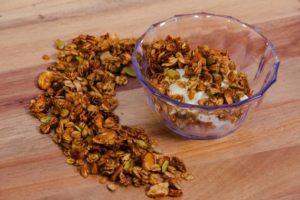Cardiovascular disease (CVD), a group of disorders of the heart and blood vessels, is the leading cause of death for both men and women in the U.S. It is also one of the most preventable causes of death when you know your risk and make appropriate lifestyle changes.
“Lifestyle changes are one of the most effective ways to get cardiovascular disease risk factors under control and prevent heart disease or keep the heart from getting sicker,” says Dr. Andre Paixao, cardiologist at Arkansas Heart Hospital.
While most cardiovascular disease risk factors are controllable, there are some that you cannot control. Continue reading for more information on each.
Heart disease risk factors you can control
Blood Pressure
- Normal blood pressure is: 120/80
- Pre-hypertension: 120-139/80-89
- Stage 1 Hypertension: 140-159/90-100
- Stage 2 Hypertension: 160 (or higher)/100 (or higher)
- Hypertension Crisis: 180 (or higher)/110 (or higher)
Diabetes
- People with diabetes or a family history of diabetes have higher-than-normal cardiovascular disease risk factors and heart attack risk.
Body Weight
- 30% or more above your ideal weight sharply increases your risk of developing heart disease.
- Women tend to be more overweight than men.
Diet
- Eating a diet high in saturated fats trans fats, salt and cholesterol has been linked to heart disease and related conditions. See nine heart-healthy nutrition tips to try today.
Stress
- Everyone has a certain amount of emotional stress every day, but the ability to handle stress varies a great deal.
Sedentary Lifestyle
- Exercise that stimulates the heart and lungs for long periods of time is essential to prevent hardening of the arteries. It keeps cholesterol down, burns calories and increases the efficiency of the heart.
- The American Heart Association advises to aim for 30 minutes of moderate intensity exercise at least five times a week. “Most patients who exercise believe they are doing this but may not actually be exercising with enough intensity to do their heart any good,” says Dr. Paixao. “Fitness bands and exercise trackers are good ways to make sure you’re getting the proper exercise to keep your heart healthy.”
Personality Type
- Research has shown that certain types of personalities are more frequently associated with heart attacks than others. For example, a hard-driving, aggressive person is more prone to suffer heart attacks.
- Anger can be a risk factor. Losing your temper can double your risk of heart attack within the next two hours.
Cholesterol
- Your total cholesterol level should be 200 or below.
- Your HDL – good cholesterol – should be 40 or above for men, 50 or above for women. The higher the number the more protection your coronary arteries have from heart disease.
- Your LDL – the amount of cholesterol you take in through your diet – should be kept below 100. If you are a cardiovascular patient, your LDL should be kept at 70 or below.
- High fat foods can raise blood cholesterol and cause fat to be deposited in the arteries.
Smoking
- Cigarette smoking is the most preventable cause of disability and death from heart attacks.
- Smokers have four times more risk of heart attacks and strokes than non-smokers.
- More smokers die from heart disease than from cancer.
- A smoker’s life expectancy is reduced by 15-19 years.
Heart disease risk factors you cannot control
Age
- For both men and women, the risk of heart attack increases with age.
- More than half of all heart attack victims are over the age of 65.
Family History
- A family history of heart attacks or strokes increases a person’s chances of suffering from heart disease. Learn how you can find out your family medical history.
Gender
- Men statistically have more heart attacks than women.
- Women are twice as likely to die from their first heart attack.
- Women before the age of menopause have fewer heart attacks.
- Men and women often have different warning signs.
Arkansas Heart Hospital recommends you talk with your primary care physician on effective ways to lower your risk for developing CVD.
Sudden cardiac arrest can happen anywhere, anytime to anyone, often without warning. That’s why it’s vital to know how to use an AED. Arkansas Heart Hospital walks you through the steps.


 If you were to focus on one thing this year that would deepen your walk with God, what would it be? Think about it.
If you were to focus on one thing this year that would deepen your walk with God, what would it be? Think about it.